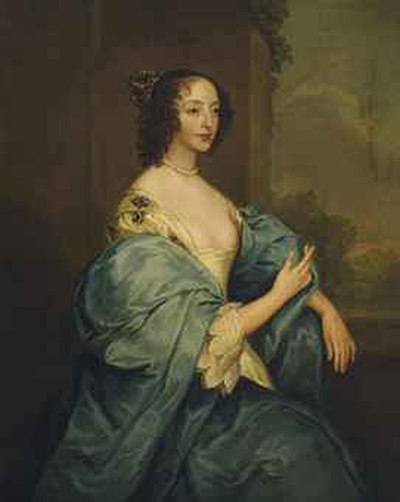Queen Henrietta Maria posed many times for artists, with several portraits still in existence today
A portrait in which she is wearing a glamorous blue dress was discovered only very recently, thanks to some restorative work and a detailed analysis by a Van Dyck expert. Newly discovered paintings, or those whose attribution is amended, continues to occur frequently due to the rise in the use of Science for investigative purposes.
The recent attribution of this painting was confirmed by Dr Christopher Brown, director of the Ashmolean Museum, who is renowned for his knowledge of the flemish master. Van Dyck's involvement in several studios as well as the influence that he left behind on others has meant that attribution of his work has sometimes proven challenging.
In 1639 the artist also produced a version where the Queen wears a red dress instead. In both she is posing as St Catherine of Alexandria. Copies similar to these two paintings were also created by other artists at around the same time. They were considered good enough to command substantial values themselves when sold on over the last few decades.
To consider that the blue dress version was painted over in the 18th century seems unbelievable. On occasions artists have reused their own canvases but to take an original Van Dyck painting of several centuries ago and paint your own work over the top seems an exceptionally strange decision to make, for many reasons.
It is paintings such as this that help us to understand the impact of Van Dyck's career on several famous artists who followed on afterwards. The likes of Thomas Gainsborough and Joshua Reynolds would surely have drawn ideas from this flemish painter's work from several centuries earlier.




